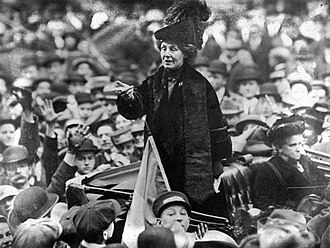Women's suffrage
Women's suffrage refers to the right of women to vote in elections and hold public office, a fundamental aspect of gender equality and democracy. Historically, women's suffrage was a central goal of the women's rights movement, with activists campaigning tirelessly for decades to achieve it. The movement varied in strategies, motivations, and degrees of success across different countries and periods.
History
The struggle for women's suffrage began in earnest in the early 19th century. Early activists in the United States and United Kingdom formed organizations to advocate for women's rights, including the right to vote. The Seneca Falls Convention in 1848, considered the birthplace of the American women's rights movement, issued a declaration that for the first time formally demanded women's right to vote. In the UK, the suffrage movement gained momentum with the formation of groups like the National Union of Women's Suffrage Societies (NUWSS) and the more militant Women's Social and Political Union (WSPU), led by Emmeline Pankhurst.
Tactics and Strategies
The suffrage movement employed a wide range of tactics from peaceful protests and lobbying to more radical actions like hunger strikes and civil disobedience. The WSPU, for example, was known for its militant approach, including arson and window smashing, to draw attention to the cause. In contrast, the NUWSS and similar organizations in other countries favored non-violent methods, such as organizing petitions and holding public meetings.
Global Movement
Women's suffrage was not only a Western phenomenon but a global movement. Countries around the world saw women fighting for their voting rights, often in the context of broader social and political reforms. New Zealand became the first country to grant women the right to vote in 1893, followed by Australia in 1902 (with some restrictions). In Scandinavia, Finland was the first to grant women the right to vote and stand for election in 1906.
20th Century Achievements
The early 20th century marked significant progress for the women's suffrage movement. In 1918, the UK granted voting rights to women over the age of 30 who met certain property qualifications. This was expanded in 1928 to include all women over the age of 21, equalizing the voting age with men. The United States followed in 1920 with the ratification of the Nineteenth Amendment to the United States Constitution, granting women the right to vote. Many other countries gradually followed suit, with movements continuing into the 21st century in some parts of the world.
Impact and Legacy
The achievement of women's suffrage had a profound impact on society, leading to greater gender equality in political and other spheres. It also paved the way for future generations of women to participate more fully in the political process, influencing policies on issues ranging from education and health care to labor laws and family rights. The legacy of the women's suffrage movement continues to inspire contemporary movements for gender equality and women's rights worldwide.
See Also
Transform your life with W8MD's budget GLP-1 injections from $125.
W8MD offers a medical weight loss program to lose weight in Philadelphia. Our physician-supervised medical weight loss provides:
- Most insurances accepted or discounted self-pay rates. We will obtain insurance prior authorizations if needed.
- Generic GLP1 weight loss injections from $125 for the starting dose.
- Also offer prescription weight loss medications including Phentermine, Qsymia, Diethylpropion, Contrave etc.
NYC weight loss doctor appointments
Start your NYC weight loss journey today at our NYC medical weight loss and Philadelphia medical weight loss clinics.
- Call 718-946-5500 to lose weight in NYC or for medical weight loss in Philadelphia 215-676-2334.
- Tags:NYC medical weight loss, Philadelphia lose weight Zepbound NYC, Budget GLP1 weight loss injections, Wegovy Philadelphia, Wegovy NYC, Philadelphia medical weight loss, Brookly weight loss and Wegovy NYC
|
WikiMD's Wellness Encyclopedia |
| Let Food Be Thy Medicine Medicine Thy Food - Hippocrates |
Medical Disclaimer: WikiMD is not a substitute for professional medical advice. The information on WikiMD is provided as an information resource only, may be incorrect, outdated or misleading, and is not to be used or relied on for any diagnostic or treatment purposes. Please consult your health care provider before making any healthcare decisions or for guidance about a specific medical condition. WikiMD expressly disclaims responsibility, and shall have no liability, for any damages, loss, injury, or liability whatsoever suffered as a result of your reliance on the information contained in this site. By visiting this site you agree to the foregoing terms and conditions, which may from time to time be changed or supplemented by WikiMD. If you do not agree to the foregoing terms and conditions, you should not enter or use this site. See full disclaimer.
Credits:Most images are courtesy of Wikimedia commons, and templates, categories Wikipedia, licensed under CC BY SA or similar.
Contributors: Prab R. Tumpati, MD






